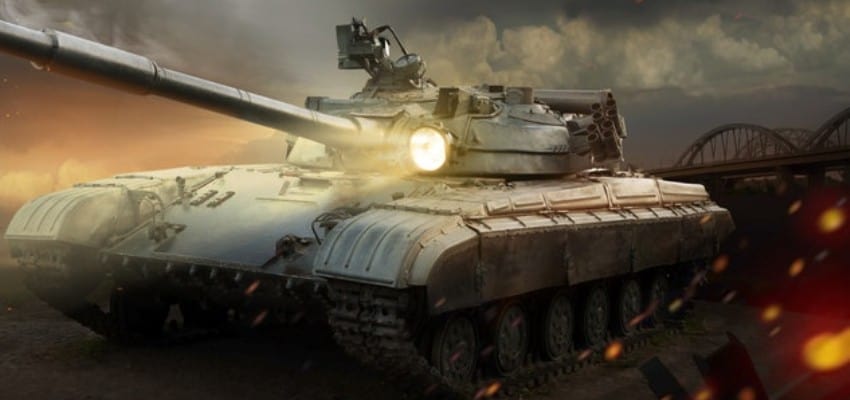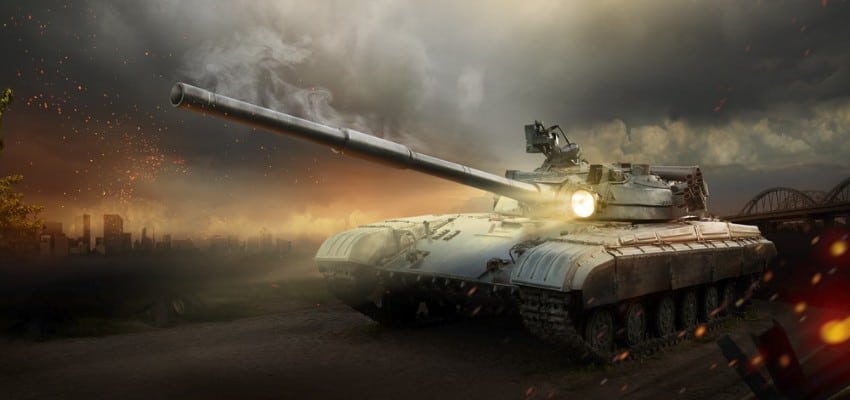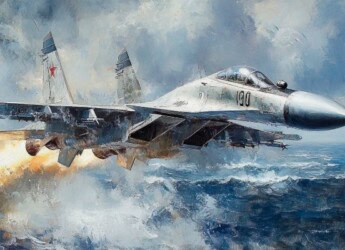|
|
Content Assessment: Elusive Encirclements? Ukraine Conflict Assessments in Maps (May 21 – 24, 2022)
Information - 90%
Insight - 89%
Relevance - 91%
Objectivity - 92%
Authority - 94%
91%
Excellent
A short percentage-based assessment of the qualitative benefit of the post highlighting the recent Ukraine conflict assessments in maps from the Institute for the Study of War.
Editor’s Note: One of the most accurate and detailed sources for ongoing updates on the Ukraine crisis is the Ukraine Conflict Update from the Institute for the Study of War. The Institute for the Study of War (ISW) is a 501(c)(3) organization and produces strictly non-partisan, non-ideological, fact-based research. ISW seeks to promote an informed understanding of war and military affairs through comprehensive, independent, and accessible open-source research and analysis. ISW’s research is made available to the general public, military practitioners, policymakers, and media members. Providing a daily synthesis of key events related to the Russian aggression against Ukraine, ISW updates may benefit cybersecurity, information governance, and legal discovery professionals as they follow the business, information technology, and legal trends and trajectories impacted by and stemming from the current Ukraine conflict.
Assessment and Maps*
Ukraine Conflict Assessments – An Overview in Maps
- Institute for the Study of War (ISW), Russia Team
- Critical Threats Project (CTP), American Enterprise Institute
General Assessment Background Info
- ISW systematically publishes Russian campaign assessments that include maps highlighting the assessed control of terrain in Ukraine and main Russian maneuver axes.
- These maps augment daily synthetic products that cover key events related to renewed Russian aggression against Ukraine.
The Russian Offensive Campaign Assessments
- May 24, 2022
- By Kateryna Stepanenko, Karolina Hird, and Mason Clark
Russian forces have likely abandoned efforts to complete a single large encirclement of Ukrainian forces in eastern Ukraine and are instead attempting to secure smaller encirclements—enabling them to make incremental measured gains. Russian forces are likely attempting to achieve several simultaneous encirclements of small pockets of Ukrainian forces in Donetsk and Luhansk oblasts: the broader Severodonetsk area (including Rubizhne and Lysychansk), Bakhmut-Lysychansk, around Zolote (just northeast of Popasna), and around Ukrainian fortifications in Avdiivka. Russian forces have begun steadily advancing efforts in these different encirclements daily but have not achieved any major “breakthroughs” or made major progress towards their stated objectives of securing the Donetsk Oblast borders or seizing all of Donbas. Luhansk Oblast Administration Head Serhiy Haidai reported that Ukrainian forces only controlled approximately 10 percent of Luhansk Oblast as of May 15 (compared to 30 percent prior to the full-scale Russian invasion on February 24, 2022). Russian forces have secured more terrain in the past week than efforts earlier in May. However, they have done so by reducing the scope of their objectives—largely abandoning operations around Izyum and concentrating on key frontline towns: Russian performance remains poor.
Russian forces will additionally likely face protracted urban combat if they successfully encircle Severodonetsk (as well as in other large towns like Bakhmut), which Russian forces have struggled with throughout the war. Russian forces are committing a significant number of their troops, artillery, and aircraft to defeat Ukrainian defenders in Luhansk Oblast and are likely pulling necessary resources from the Izyum axis, defensive positions around Kharkiv City, Donetsk City, and the Zaporizhia area. Luhansk Oblast Administration Head Serhiy Haidai has previously compared Ukrainian forces in Luhansk Oblast to the previous defenders of Mariupol, which aimed to wear out Russian forces and prevent further offensive operations. The UK Defense Ministry also noted that a Russian victory over Severodonetsk will only worsen Russian logistical issues and extend Russian ground lines of communication (GLOCs). Russian forces are making greater advances in the past week than throughout the rest of May—but these advances remain slow, confined to smaller objectives than the Kremlin intended, and face continued Ukrainian defenses; they do not constitute a major breakthrough.
Senior Kremlin officials are increasingly openly admitting that the Russian offensive in Ukraine is moving slower than anticipated and are grasping for explanations to justify the slow pace. Russian Defense Minister Sergey Shoigu claimed that Russian operations in Ukraine are progressing slowly because Russian forces want to afford civilians the opportunity to evacuate, though Russian forces have targeted Ukrainian civilians throughout the war and repeatedly denied Ukrainian attempts to negotiate humanitarian evacuation corridors. Shoigu’s statement is notably his first admission that Russian forces are behind schedule and is the first official statement on the pace of the war since Belarusian President Alexander Lukashenko stated that the operation was “dragging” on May 4. Russian milbloggers are criticizing Shoigu’s claimed consideration for civilians and claimed that Soviet troops would not have cared if “Nazi” civilians evacuated, part of the growing Russian nationalist reaction that the Kremlin is not doing enough to win the war in Ukraine. Director of the Russian Foreign Intelligence Service Sergey Naryshkin stated that the ultimate goal of the Russian offensive is to ensure “Nazism” is “100% eradicated, or it will rear its head in a few years, and in an even uglier form.” Naryshkin and Shoigu’s statements indicate that Russian officials are likely setting conditions for a protracted war in Ukraine in order to justify slower and more measured advances than initially anticipated.
Forcefully mobilized servicemen from the Donetsk and Luhansk People’s Republics continued to protest the Russian and proxy military command. Servicemen of the 3rd Infantry Battalion of the 105th Infantry Regiment from the Donetsk People’s Republic (DNR) recorded a video appeal to DNR Head Denis Pushilin wherein they claimed they were mobilized on February 23 and that they have been forced to actively participate in hostilities despite their lack of military experience. The battalion stated that they served on the frontlines in Mariupol and have been redeployed to the territory of the Luhansk People’s Republic (LNR) with only 60% of their original personnel and are now dealing with severe morale issues and physical exhaustion. The battalion notably claimed that the servicemen did not go through routine medical inspection prior to service and that many are suffering from chronic illnesses that should have rendered them ineligible for service. The video appeal is consistent with numerous reports from Ukrainian and Western sources that proxy forces are largely forcibly mobilized, poorly trained, and suffering from declining morale, but is notable due to the willingness of the DNR servicemen to publicly express their discontent.
Key Takeaways
- Russian forces have likely abandoned efforts to encircle large Ukrainian formations in eastern Ukraine and are instead attempting to secure smaller encirclements and focus on Severodonetsk.
- This change in the Russian approach is enabling gradual advances—but at the cost of abandoning several intended lines of advance and abandoning the Kremlin’s intended deep encirclement of Ukrainian forces in eastern Ukraine.
- Ukrainian forces are likely conducting a controlled withdrawal southwest of Popasna near Bakhmut to protect Ukrainian supply lines against Russian offensives in the southeast of Bakhmut.
- Russian occupation authorities in Mariupol announced that they will hold war crimes trials against Ukrainian soldiers in Mariupol in a likely effort to strengthen judicial control of the city and support false Kremlin narratives of Ukrainian crimes.
- Russian forces are attempting to retake Ternova in northern Kharkiv Oblast and seek to stabilize defensive positions near the Russian border against the Ukrainian counteroffensive.
- Russian forces are forming reserves and deploying S-400 missile systems in northwest Crimea to reinforce the southern axis.
- Several DNR servicemen openly released a video appeal to DNR leader Denis Pushilin stating they have been forced into combat operations without proper support, indicating increasing demoralization among Russian and proxy forces.
- May 23, 2022
- By Kateryna Stepanenko, Karolina Hird, Mason Clark, and George Barros
Russian nationalist figures are increasingly criticizing the failures of Russia’s “special military operation” in Ukraine and are calling for further mobilization that the Kremlin likely remains unwilling and unable to pursue in the short term. The All-Russian Officers Assembly, an independent pro-Russian veterans’ association that seeks to reform Russian military strategy, called for Russian President Vladimir Putin and the Kremlin to declare war on Ukraine and introduce partial mobilization in Russia on May 19. The Assembly said that Russia’s “special military operation” failed to achieve its goals in three months, especially after the failed Siverskyi Donets River crossings. ISW previously assessed that the destruction of nearly an entire Russian battalion tactical group (BTG) during a failed river crossing on May 11 shocked Russian military observers and prompted them to question Russian competence. The Assembly’s appeal called on Putin to recognize that Russian forces are no longer only “denazifying” Ukraine but are fighting a war for Russia’s historic territories and existence in the world order. The officers demanded that the Kremlin mobilize all regions bordering NATO countries (including Ukraine), form territorial defense squads, extend standard military service terms from one year to two, and form new supreme wartime administrations over Russia, the Donetsk and Luhansk People’s Republics (DNR and LNR), and newly occupied Ukrainian settlements. The officers also demanded the death penalty for deserters.
The Assembly’s letter may be a leading indicator of elements of the Russian government and society setting informational conditions to declare partial mobilization. However, the Kremlin has so far declined to take this step likely due to concerns over domestic backlash and flaws in Russia’s mobilization systems. The All-Russian Officers Assembly called on Putin to recognize the independence of the DNR and LNR three weeks prior to the Russian invasion of Ukraine, setting conditions for the Russian “special military operation.” Russian Defense Minister Sergey Shoigu announced on May 20 that Russia will form 12 new Western Military District units (of unspecified echelon) before the end of the year in response to NATO expansion. Russian forces may intend to man these units with newly mobilized personnel, as it is unclear how else the Kremlin could generate the manpower for new units. The Ukrainian General Staff also reported that Russian forces are withdrawing old T-62 tanks from storage to form new BTGs. Russia is likely continuing to exhaust its remaining combat-ready reserves to maintain the momentum of the Battle of Severodonetsk, rather than prioritizing preparations for new reinforcements. ISW previously assessed that Russian mobilization is unlikely to generate combat-ready force due to hasty training.
More Russians supportive of the Kremlin and the Russian invasion of Ukraine are beginning to criticize the Kremlin openly. Russian milbloggers claimed that the Kremlin will not honor the Officers Assembly appeal, indicating an intensifying negative perception of the Russian leadership among Russians supportive of the war in Ukraine. Kaliningrad Oblast Governor Anton Alikhanov publicly stated that the Russian war in Ukraine has disrupted transport routes and construction schedules in the region, a rare admission of the economic cost of the war from a Russian government official. The Ukrainian General Staff also reported that Russian military personnel are increasingly complaining about the ineffectiveness of offensive operations against Ukrainian troops.
Unidentified assailants continued attacks against military recruitment offices in Russia on May 23, indicating growing discontent with conscription. A Russian Telegram channel reported that an unknown attacker threw a Molotov cocktail at the military recruitment office in the Udmurtia region, which follows a May 19 incident wherein a Russian conscript shot at a recruitment office in Zheleznogorsk-Ilimsky (Irkutsk Oblast) with a pneumatic device. The Ukrainian General Staff previously reported that 12 total attacks on recruitment offices have happened since the beginning of the war, with five happening in the past few weeks alone. These attacks may represent growing domestic discontent with conscription and recruitment practices.
The UK Ministry of Defense reported that Russia has suffered a similar death toll within the first three months of the invasion of Ukraine as was experienced by the Soviet Union over the course of nine years in Afghanistan. The British Ministry of Defense stated that a combination of poor low-level tactics, poor air defense, lack of operational flexibility, and poor command methods have resulted in repeated mistakes and failures, which are continuing to be evident in Donbas. The report noted that the Russian public is sensitive to high casualty numbers, and assessed that as casualties suffered in Ukraine grow and become harder to conceal, public dissatisfaction will increase.
Key Takeaways
- Russian nationalist figures (including veterans and military commentators) are increasingly criticizing the failures of Russia’s “special military operation” in Ukraine and are calling for further mobilization that the Kremlin likely remains unwilling and unable to pursue in the short term.
- Russian forces around Izyum increased their tempo of air and artillery strikes and likely intend to attempt to resume stalled offensive operations in the coming days.
- Russian operations to encircle Severodonetsk made minor gains in the past 24 hours, driving north through Zolote. Fighting is ongoing in Lyman (north of Severodonetsk) as Russian forces attempt to cut off Ukrainian supply lines
- Russian forces will likely make further minor gains west of Popasna in the near future but are unlikely to be able to quickly seize Bakhmut.
- The Ukrainian counteroffensive northeast of Kharkiv continues to threaten Russian positions and is forcing Russia to pull units from ongoing offensive operations in eastern Ukraine to shore up their defensive positions near Vovchansk.
- May 22, 2022
- By Karolina Hird, George Barros, and Mason Clark
Russian forces made only minimal gains in eastern Ukraine on May 22. New reporting confirmed that Russian troops previously recaptured Rubizhne in northern Kharkiv Oblast, on May 19. Russian forces are likely committing additional reinforcements to hold their positions on the west bank of the Siverskyi Donets River in northern Kharkiv—rather than withdrawing across the river to use it as a defensive position—to prevent any further Ukrainian advances to the north or the east that could threaten Russian lines of communication to the Izyum axis. Ukrainian sources additionally confirmed previous Russian-claimed advances around Popasna, and Russian forces likely seek to open a new line of advance north from Popasna to complete the encirclement of Severodonetsk while simultaneously driving west toward Bakhmut, though Russian forces are unlikely to be able to fully resource both lines of advance simultaneously.
Key Takeaways
- Ukrainian sources confirmed that Russian forces have secured local advances to the north and west of Popasna since at least May 20. Russian forces likely seek to push further west toward Bakhmut and north to support the encirclement of Severodonetsk but remain unlikely to achieve rapid advances.
- Russian forces will likely attempt to hold positions west of the Siverskyi Donets River against Ukrainian attacks (rather than retreating across the river) to prevent further Ukrainian advances from threatening Russian lines of communication to Izyum.
- Russian occupying forces continued filtration and deportation procedures in and around Mariupol.
- Russian forces are likely preparing to resume offensives on the southern axis.
- May 21, 2022
- By Karolina Hird, George Barros, and Mason Clark
Russian forces intensified efforts to encircle and capture Severodonetsk on May 21 and will likely continue to do so in the coming days as efforts on other axes of advance, including Izyum, remain largely stalled. Russian troops in Luhansk Oblast will likely move to capitalize on recent gains made in the Rubizhne-Severodonetsk-Luhansk-Popasna arc to encircle and besiege Severodonetsk—the final Ukrainian strongpoint in Luhansk Oblast. Russian milbloggers are hypothesizing on the success of Russian tactics in the area and have dubbed it the Battle of Severodonetsk—emphasizing that this is the preliminary line of effort in the Donbas theatre.
Key Takeaways
- Russian forces are conducting operations to cut off Ukrainian ground lines of communication (GLOCs) between Severodonetsk and Lysychansk across the Severskyi Donetsk River.
- The information space in Mariupol will likely become increasingly restricted in the coming weeks as Russian forces shift focus from completing the capture of the Azovstal Steel Plant to consolidating occupational control of the city.
- Russian troops are likely reinforcing their grouping around Kharkiv City to prevent further Ukrainian advances toward the international border.
- Russian forces may be assembling forces in certain areas of Zaporizhia and Kherson oblasts to initiate further offensive operations on the southern axis.
We do not report in detail on Russian war crimes because those activities are well-covered in Western media and do not directly affect the military operations we are assessing and forecasting. We will continue to evaluate and report on the effects of these criminal activities on the Ukrainian military and population and specifically on combat in Ukrainian urban areas. We utterly condemn these Russian violations of the laws of armed conflict, Geneva Conventions, and humanity even though we do not describe them in these reports.
Ukraine Conflict Maps - 052122-052422
Read the latest Ukraine Conflict updates from the Institute for the Study of War
* Shared with direct express permission from the Institute for the Study of War (ISW).
About the Institute for the Study of War Research Methodology
ISW’s research methodology relies on both primary and secondary sources, enabling researchers to develop a comprehensive understanding of the situation on the ground. In order to analyze military and political developments in any given area, ISW’s research analysts must wholly understand the systems of enemy and friendly forces. They must also understand the population demographics, physical terrain, politics, and history of that area. This lays the analytical foundation for understanding the reasons for particular developments and fulfilling their assigned research objectives. ISW analysts also spend time in places like Iraq, Afghanistan, and elsewhere in order to gain a better understanding of the security and political situation and to evaluate the implementation of current strategies and policies. Our researchers compile data and analyze trends, producing a granular analysis of developments in areas of research, producing an accurate, high-resolution, timely, and thorough picture of the situation. ISW’s research methodology guarantees its success and commitment to improving the nation’s ability to execute military operations, achieve strategic objectives, and respond to emerging problems that may require the use of American military power.
About the Institute for the Study of War
The Institute for the Study of War advances an informed understanding of military affairs through reliable research, trusted analysis, and innovative education. We are committed to improving the nation’s ability to execute military operations and respond to emerging threats in order to achieve U.S. strategic objectives. ISW is a non-partisan, non-profit, public policy research organization.
Learn more, get involved, and contribute today.
Additional Reading
- [Annual Update] International Cyber Law in Practice: Interactive Toolkit
- Data Embassies: Sovereignty, Security, and Continuity for Nation-States
Source: ComplexDiscovery



























